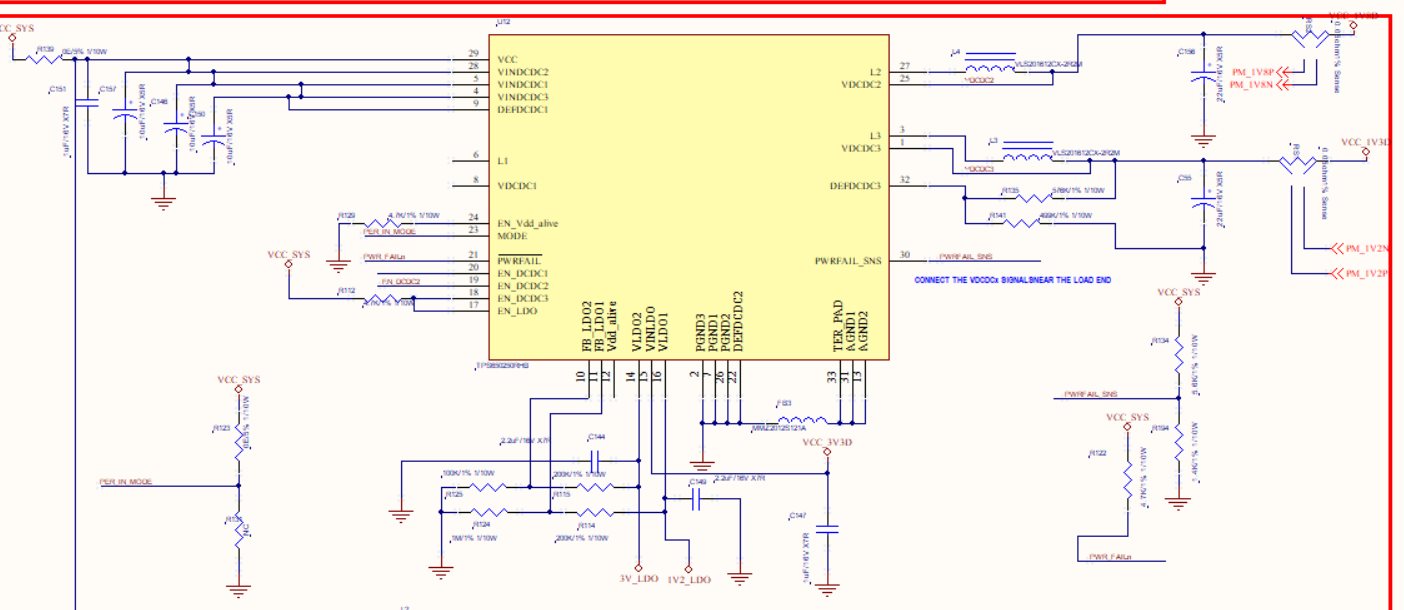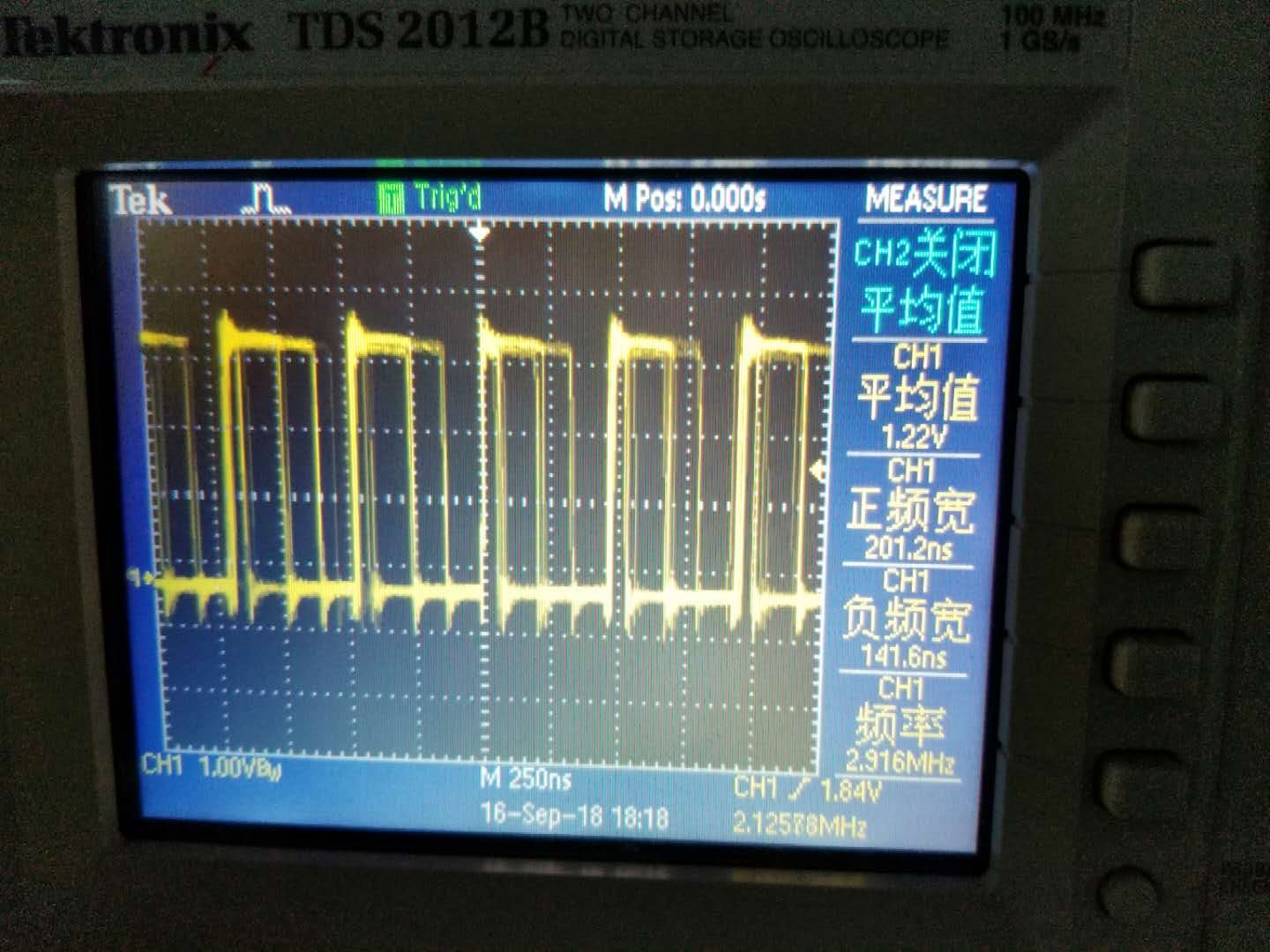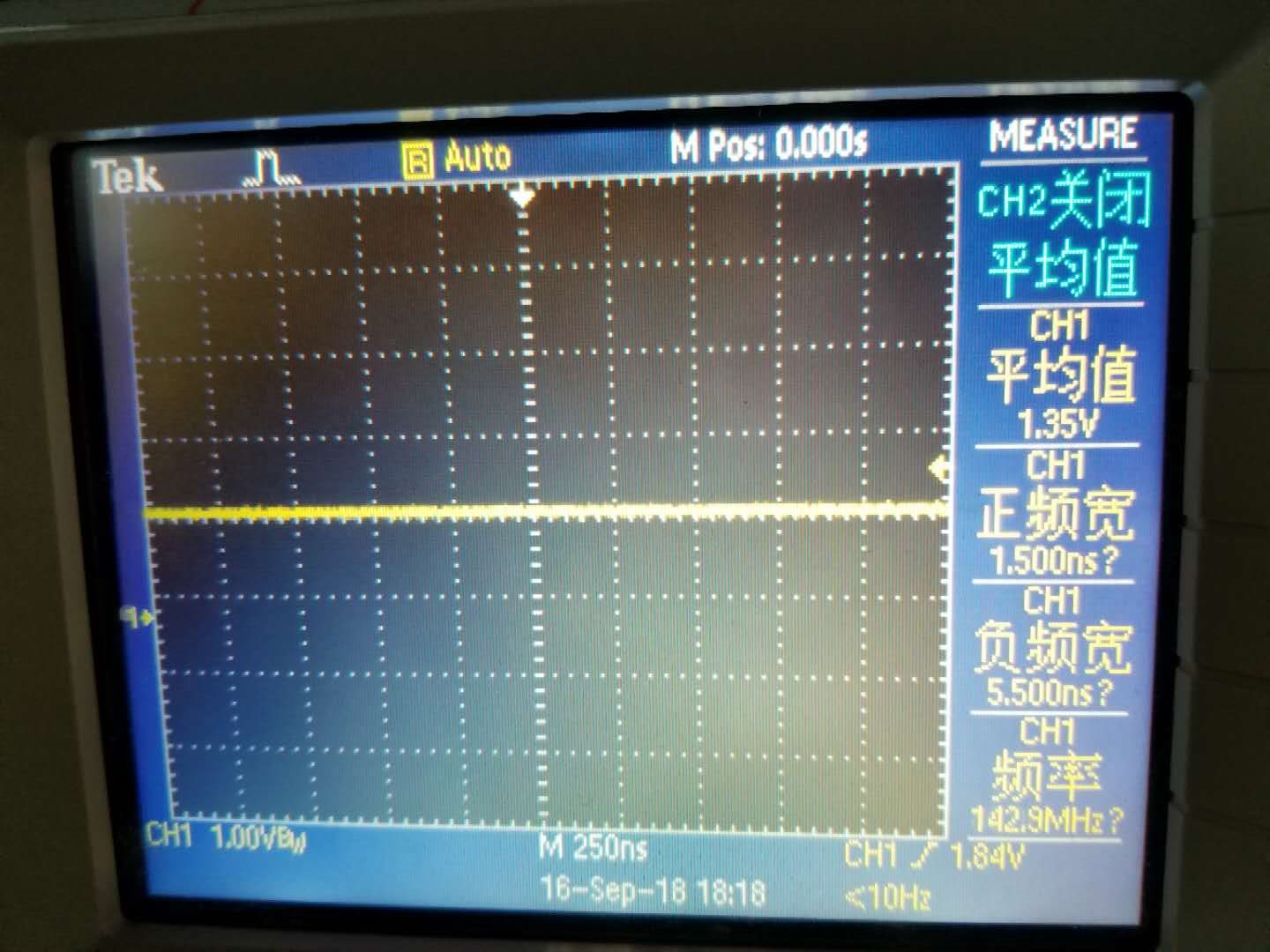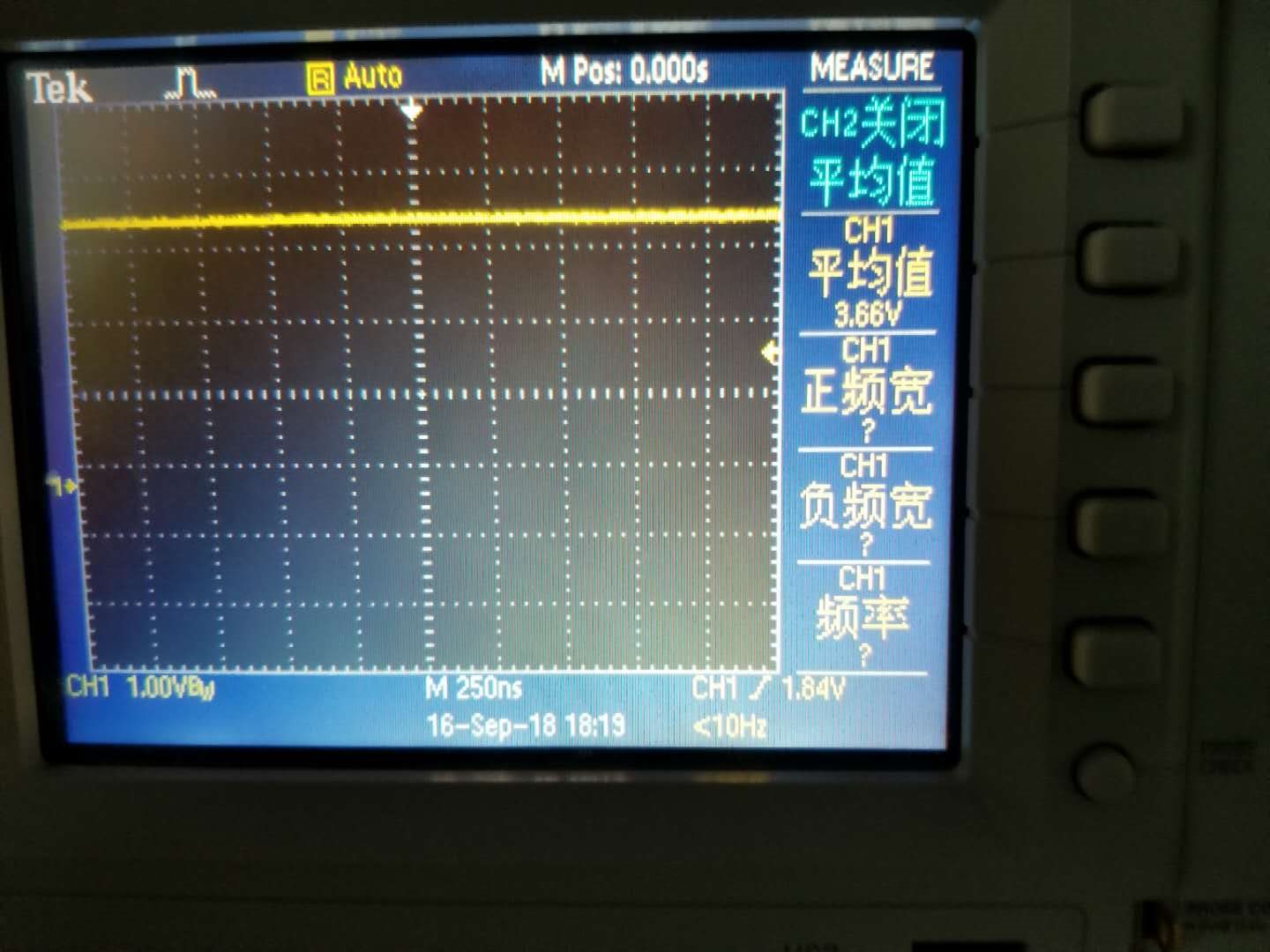Here is the schematic:
For test, I disable the EN_DCDC1 and EN_DCDC2. And connect the VDCDC3 PIN to a 3.3Ohm resist as a load. And the MODE pin of TSP650250 is tight to VCC_SYS. The VDCDC3 is designed to be 1.3V.
When the 3.3Ohm resist load is not connected, the L3 pin of TPS650250 is a stable PWM with a frequency=2.25MHz. Everything works OK.
But when the 3.3Ohm resist load is connected, the L3 pin PWM output shakes a lot, while the VDCDC3 is still stable. But since the L3 PWM shakes, I can hear the noise.
Figure1 ---- L3 output:
Figure2 ---- VDCDC output = 1.3V:
Figure3 ---- VCC_SYS input:
The inductor I use is VLS201612CX-2R2M, 2.2uH. And the output capacitance is 22uF.
I also tried the 3.3uH inductor in the above table. But the PWM output still shakes.
And I also tried another 2.2uH inductor with smaller ESR, which is shown in the following table, but the PWM output still shakes.
The Question is: Why the L3 pin PWM output shakes?
Thank you.







